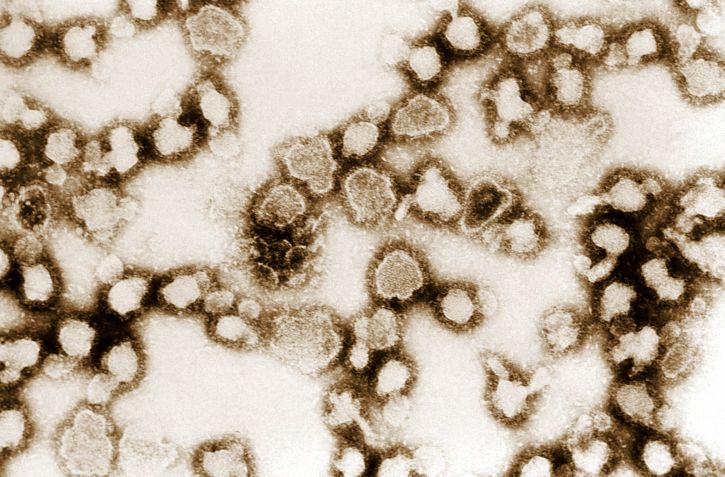Playlist
Show Playlist
Hide Playlist
Bunyaviruses
-
02-50 Bunyaviruses.pdf
-
Download Lecture Overview
00:01 The bunyaviridae. 00:04 The bunyaviridae are mid-sized, enveloped viruses which have a helical capsid. 00:09 They also have a linear single-stranded, negative-sense segmented RNA genome, and so they must carry an RNA- dependent RNA polymerase. 00:18 And you could see images of the bunyaviridae on the scanning electron micrograph in front of you. 00:27 The representative species that we'll talk about are the encephalitis viruses, especially the California encephalitis virus. 00:34 And then hemorrhagic fever viruses, including hantavirus, and similarly, the sandfly/rift valley fever virus, and the Crimean-Congo hemorrhagic fever virus. 00:45 Because these all manifest in a similar fashion, today we will just discuss, of those, the hantavirus. 00:52 So, the bunyaviridae primarily are arboviruses, meaning that they are transmitted through the bite of a biting insect, especially mosquitoes, but sometimes, fleas, flies, or ticks. 01:07 The exception, of course, is the hantavirus that is transmitted by rodents, including this cute little one in front of you on the image. 01:15 The pathogenesis of the bunyaviridae starts with primary infection, regardless of whether it is via the bite of a biting insect, or via the stool or urine of a infecting rodent. 01:29 After primary infection occurs with the inoculation, then flu-like symptoms develop, and again, this is a very typical pattern with many of the viruses we talk about. 01:39 The primary processes: fever, malaise, anorexia, some vomiting, diarrhea, general sense of poor being. 01:49 And then there is a secondary viremia after that primary infection, and while the symptoms are ongoing, and target organs are affected depending on the virus and depending on the virus' tropism. 02:02 And some of the target organs are displayed here, but especially the central nervous system, especially for the encephalitis viruses, liver, lungs, endothelium with vascular infection, especially with the hantavirus.
About the Lecture
The lecture Bunyaviruses by Sean Elliott, MD is from the course Viruses.
Included Quiz Questions
Which of the following is most likely to serve as a vector for the transmission of hantaviruses?
- Rodents
- Mosquitoes
- Sandflies
- Ticks
- Fleas
Customer reviews
5,0 of 5 stars
| 5 Stars |
|
5 |
| 4 Stars |
|
0 |
| 3 Stars |
|
0 |
| 2 Stars |
|
0 |
| 1 Star |
|
0 |




